Want to turn any small room into an art studio? This blog post idea came to me when I was typing about how to keep consistency with art and establish it as a habit. Optimizing our environment or turning any room into an art space was one of the points I felt the need to talk about more separately.
For most young artists, it could be really easy to stop practicing art because of the distractions of dense schedules, studies, and social life. Yet, it could be easier to keep that up only through smaller changes in your environment.
In this blog post, I will cover:
- Why should you turn your room into an art-friendly environment?
- How do you do it when “you can’t do that, you live with your parents, and your room is very small…”?
- How can you simply redesign (on a budget) your space to stay consistent with art?
- Surprising parts of your small room could be turned into an art zone.
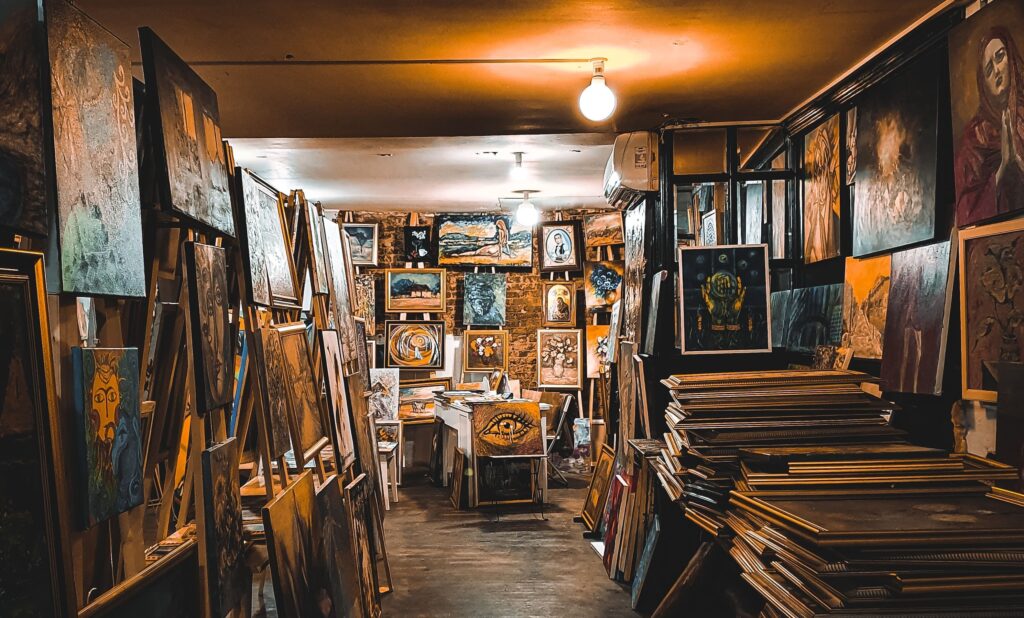
1- Why turn your room into an art-friendly environment in the first place?
Because as humans, our environment shapes who we are, what we do, and how often we do it. As humans, our habits are initiated by cues, and we are more likely to notice the cues that are most visible to the eye.
Unfortunately, for most young artists, the environment where they live and work often makes it hard to take any creative action because it lacks obvious cues to trigger creative behaviors.
For instance, it’s easy not to take your vitamins when you’re keeping them in the pantry out of sight, but it’s much easier to take them when you open your eyes to them every morning next to your bed.
In the same way, it’s easy not to draw or paint when your sketchbooks and canvases are hidden on your balcony, but it’s much easier to grab your brushes and paint when your room has a built-in art studio or just paintings in progress put on display.
2- I can’t do that, I live with my parents and my room is very small…
I understand that most of you reading this post are younger and probably live in a world others have created for you, aka your parents, older siblings, school dorm, etc. I have been there myself. But you can alter your environment to increase exposure to triggers and positive cues through small, subtle changes, such as:
- Put your journal, pens, and stationery at eye level when your goal is to journal more.
- Keep the painting you’re trying to finish right in front of the entrance of your room instead of “temporarily” packing it away with the finished ones.
If your room is too small and you’re willing to make these changes, Keep this in mind:
Divide that one room you have into different activity zones. A chair next to the easel for painting; a desk for your studies; a table for eating; and your bed for sleeping.
This, for example (the picture below), is all you need to make it easier and more accessible for yourself to create art more often.
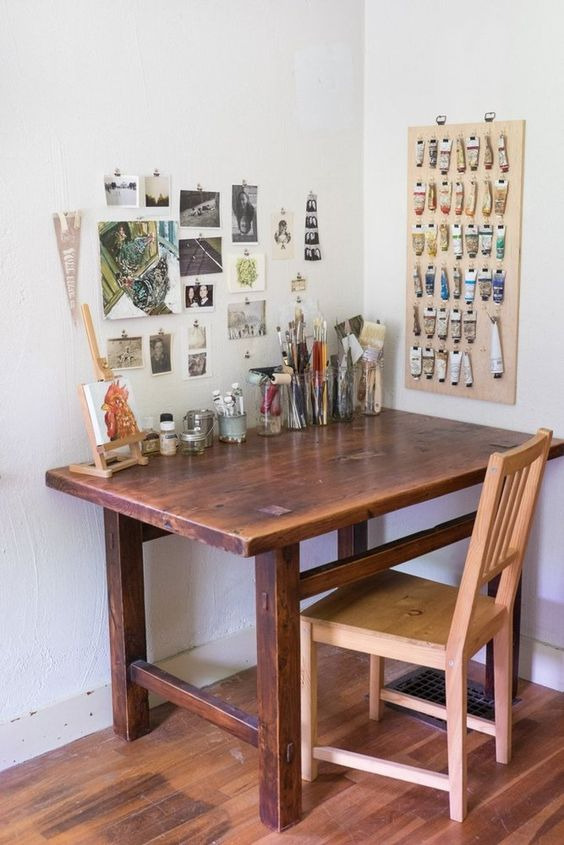
Redefine or rearrange your current environment if you can’t manage to get an entirely new environment. However, make sure you keep the place you use for creativity somehow separate. If you mix both, the easier act will win.
For example, if you use your bed to nap in your free time and you start to paint in the exact bed where you nap, you’ll end up giving in to naps instead of painting.
Once you’ve divided your room into different zones, make sure to go back to the place where you often paint to paint more often.
Here’s an example: If you watch television on your couch every night, you’re more likely to unconsciously turn the television on whenever you sit on your couch around midnight. So if you’re trying to paint consistently, instead of heading to your bed where you usually sleep, make that chair your new painting space, and build your new creative routine there.
3- How to simply redesign your space to stay consistent with art? (on a budget)
When you redesign your environment, you predict your circumstances. So every time you walk into your room, you’ll be inspired to paint or at least think about it.
Here are a few easy ways you can redesign your art space to help you stay consistent with art:
- If you want to paint more often, create a visible storage area for your supplies. Avoid storing them in a drawer.
Avoid this kind of storage.
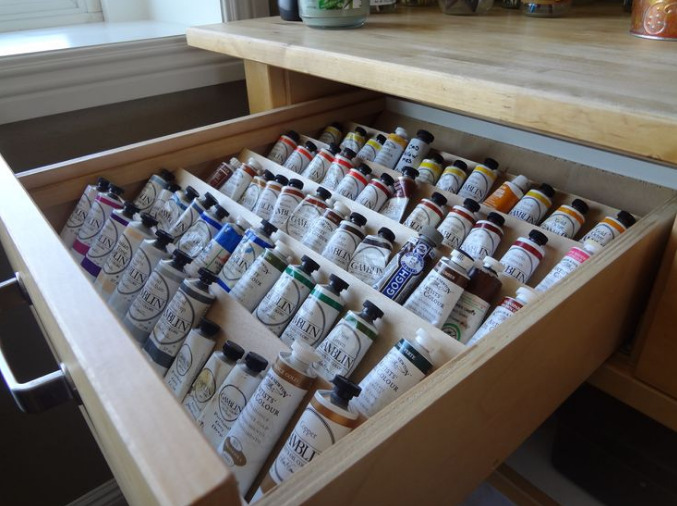
And do this instead:
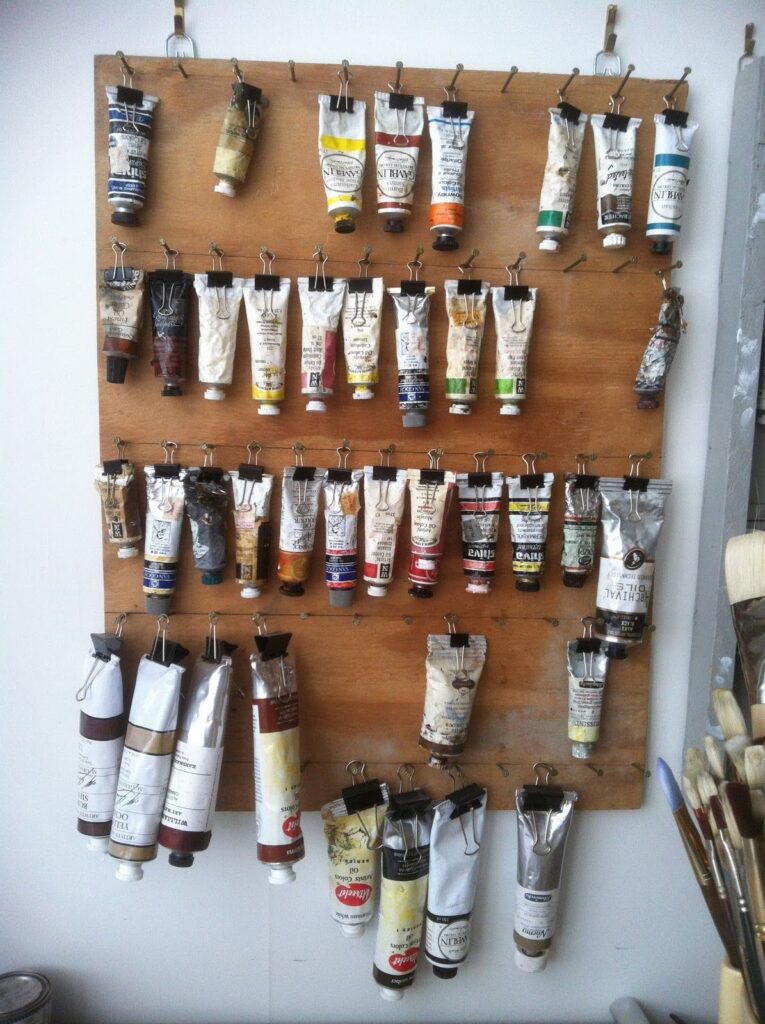
If you want to finish the painting you started, do not leave your setup looking like this while waiting for the next painting session.
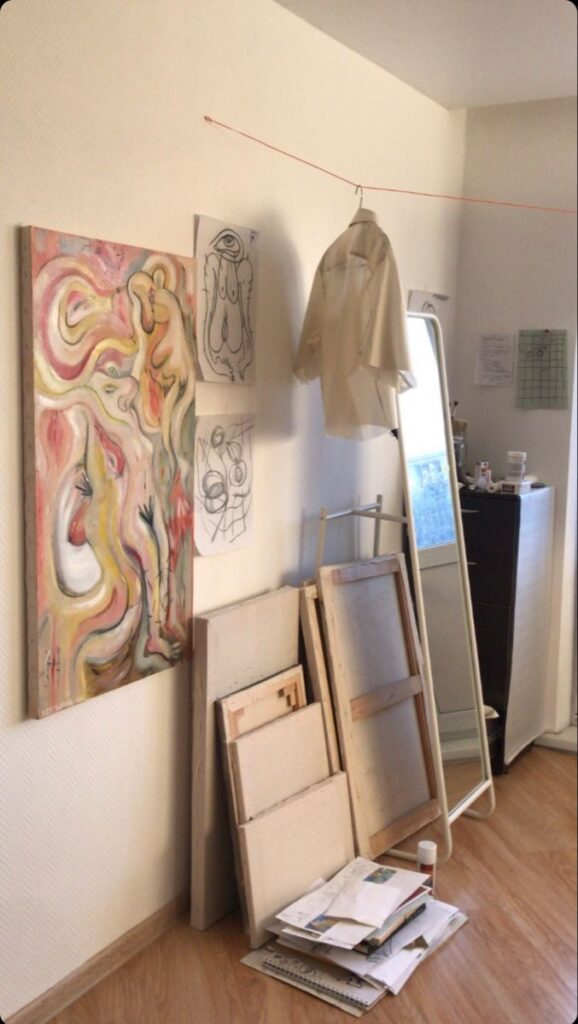
Leave it like this instead:
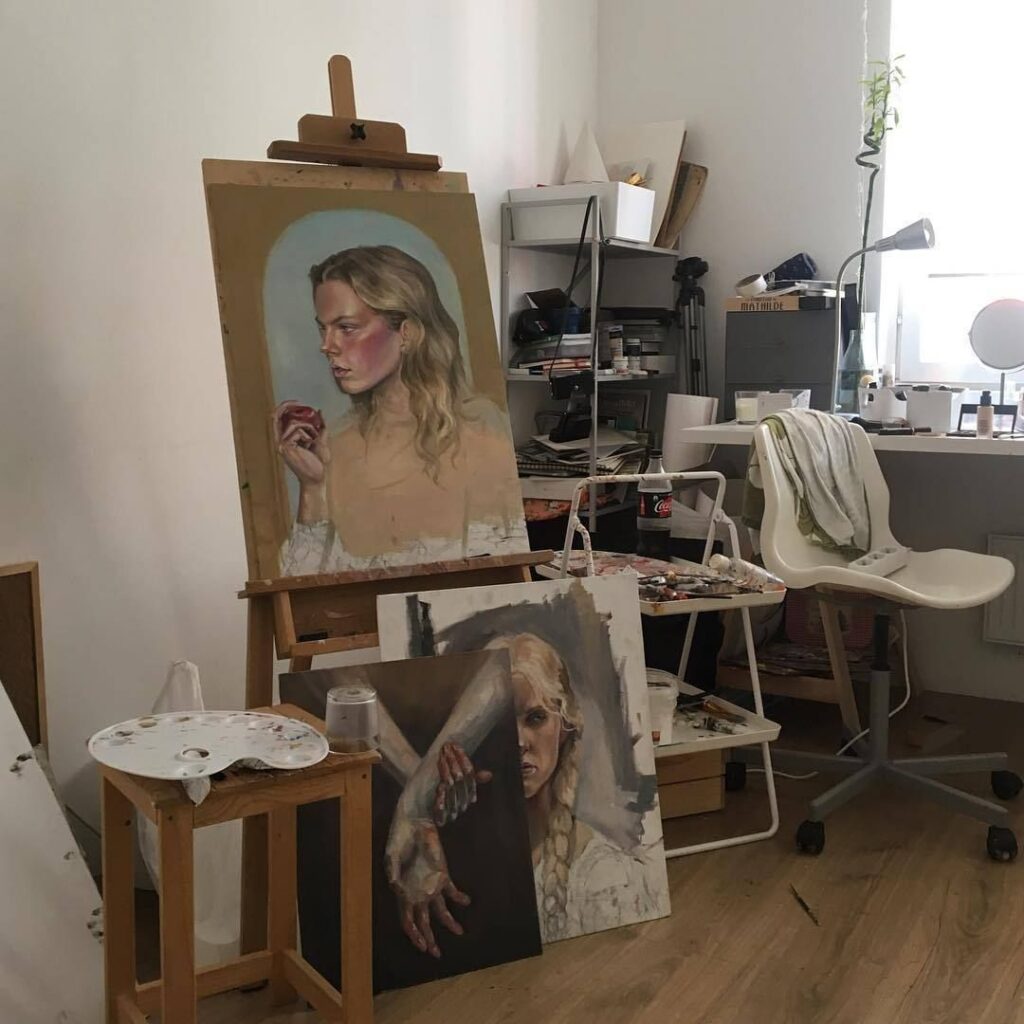
You want to give your mind enough triggers to go back to painting whenever you enter the room.
- If you’re trying to sketch more, keep the sketchbook next to your bed, or try sketching as part of your creative journaling. Squeeze only two minutes* of sketching into your routine and keep it consistent.
*I learned the two-minute rule from Atomic Habits by James Clear. It states: “When you start a new habit, it should take less than two minutes to do.”
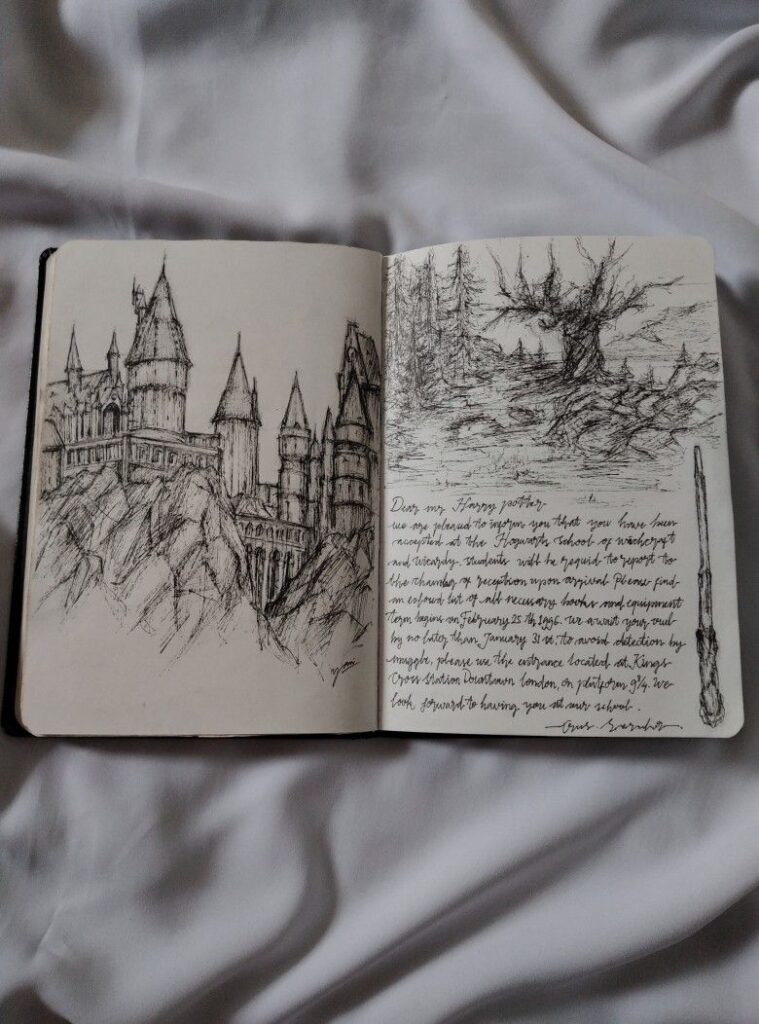
The whole idea is that by sprinkling triggers throughout your surroundings and making it easy for you to reach the items related to your creative practice, you increase your thinking about the activities you desire to keep consistent (painting, playing guitar, journaling, drinking water, working out…).
4- Which part of my small room could be turned into an art zone?
Now that we made it clear that you only need tiny, subtle changes to turn your room into an art studio, you can experiment and decide based on what your space looks like. Despite this, I have gathered some suggestions from which you can find the best one for you.
You can turn your closet into an art zone.
You will need to remove the door, though, but a closet can perfectly serve as an art zone.
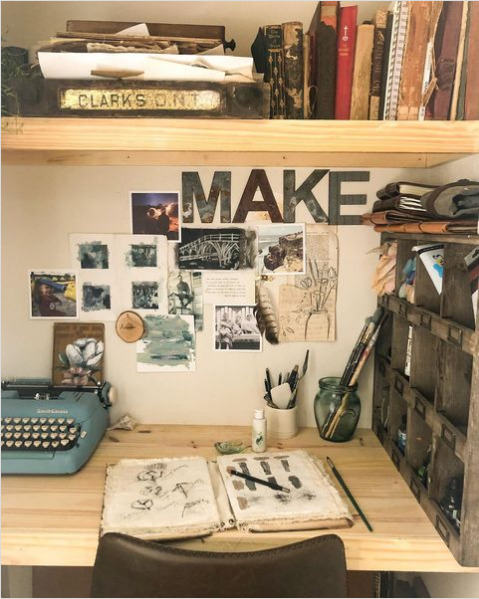
Decorate it to make it catchy, and then leave all the things you wish to do on display. This one would serve both as a storage space and a space to do art, so I highly encourage you to try it if possible.
You can turn an empty corner into an art zone.
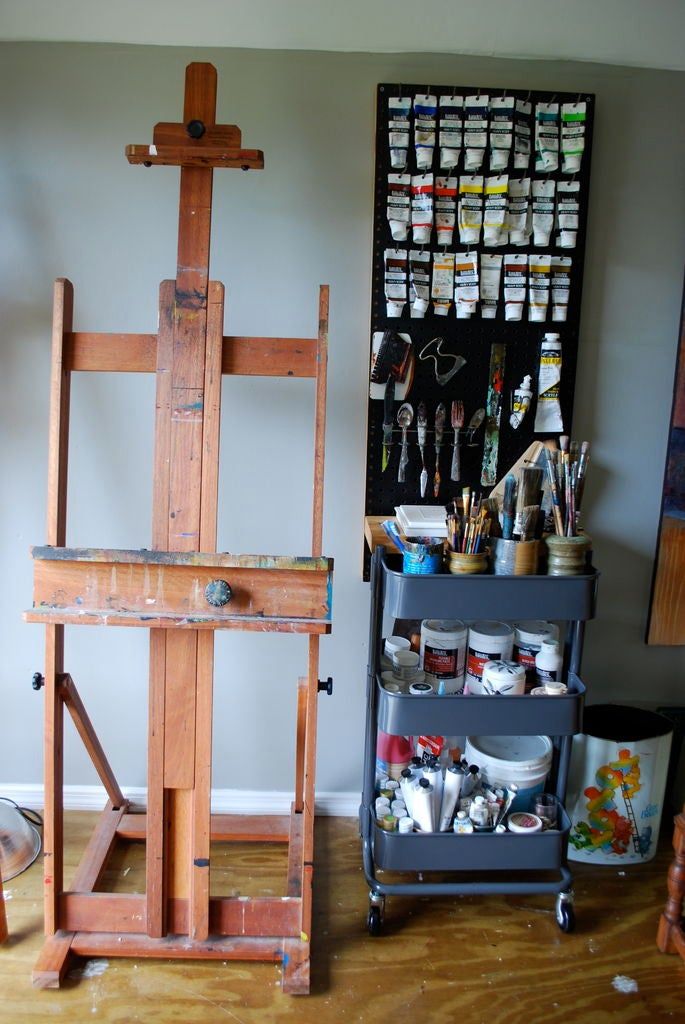
All you need is an easel and a rolling cart to store your supplies, and you’re good to go.
You can turn a wall into an art zone.
This is the ultimate one because every room has a wall. And even if you can’t make holes in the walls because you live in a rental, you don’t need to. You can always use removable wall stickers, adhesive hooks, and damage-free tape, or you can use cork boards or chalkboards to display your paint, canvas, paper, and brushes. Whatever your medium is, you can use any other board to stick your desired items to it.
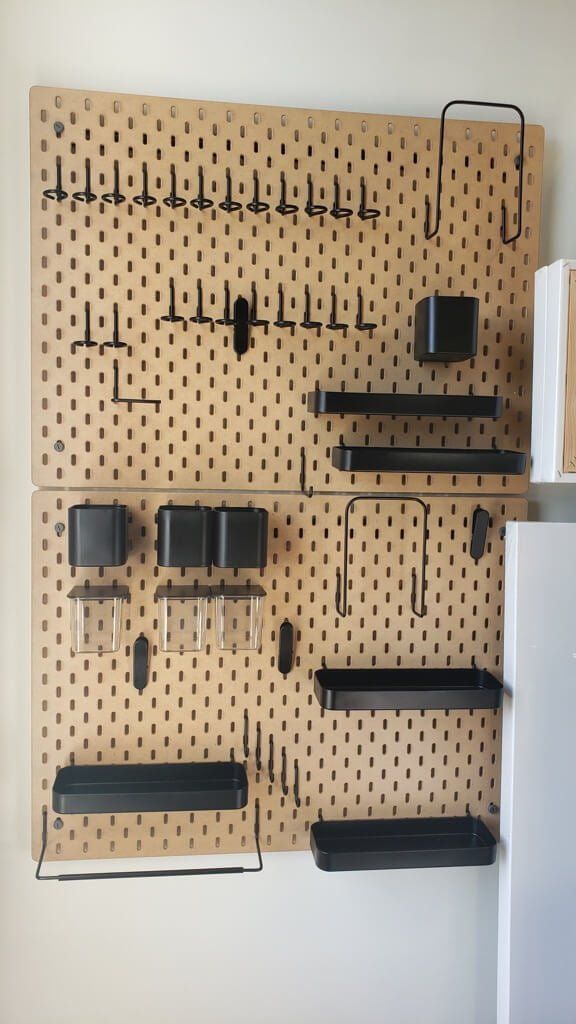
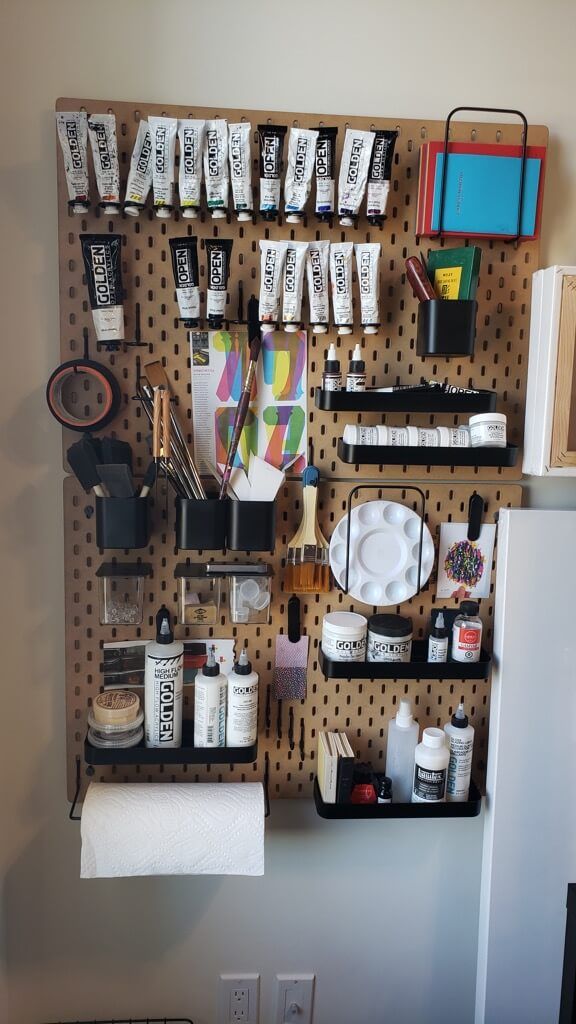
Conclusion
What I want you to take away from this blog post is that a practical art studio does not require a lot of money or a large area. You can quickly transform underutilized space and improve your environment to serve your goals as an artist. Stop waiting for the right time. Your willpower and passion shall go beyond the restrictions and limits you put on yourself.



I really enjoyed your blog. I’ve been painting for 50 years and you have been amazing describing how to turn a small room into an art studio. Very good information.
Thank you for your positive feedback! Im glad you enjoyed my content